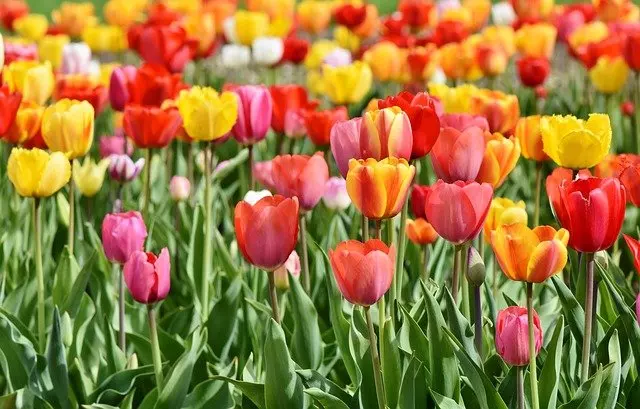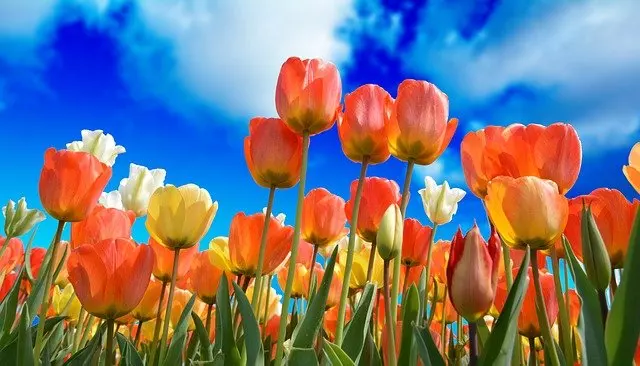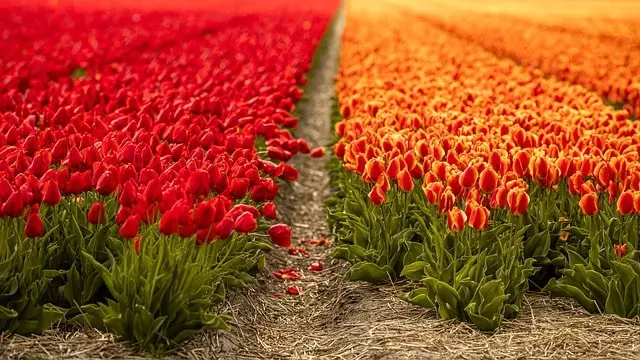Maybe you already know… The national flower of the Netherlands is the tulip. Tulips are gorgeous flowers with many varieties. The National Flower of the Netherlands symbolizes warmth, love, and sympathy. They are often referred to as flowers of many meanings because the color can express happiness, forgiveness, and perfect love. Therefore, it can be said that they are synonymous with the best. They are an excellent garden decoration, so they are worth growing.
Table of Contents
National Flower of Netherlands Video
Here is a beautiful video where you can see the national flower of the Netherlands in its cultivation.
What You Should Know about the National Flower of the Netherlands?
Tulips are flowers that are present almost everywhere in the world. Although they are often associated with the Netherlands, their native range is in Asia and Turkey. They probably originate from Persia, where their cultivation began in the 10th century A.D. It is also worth knowing that they belong to the Lily family.
Currently, it is believed that there are currently 120 species of tulips, but as many as 15,000 cultivars, which is very impressive. The variety of varieties of tulips makes them significantly different from each other.
As for its characteristics, the stem measures 3″ to 29″ (7 to 75 cm), which is a huge section. Usually, the leaves grow from the bulb of a tulip and are oblong or lanceolate. The subway part is the onion, which is a modified shoot. It is covered with a scale, which is a protective barrier against water loss and excess heat. The perianth consists of a calyx and a crown, which can be of various colors. Tulips are known for the phenomenon of thermonasty, which means that the flowers open at high temperatures, and when the temperature drops, they close.
In 2023, a radio program conducted a survey to choose a new national flower for the Netherlands, and the daisy emerged as the winner. However, despite online mentions that the daisy is the new national flower of the Netherlands, the tulip still holds that title.

Planting Tulips: How to do it?
Tulips are planted from bulbs. Here, much attention should be paid to their size, firmness, and hardness. Tulip bulbs should not be discolored or flaky in any way. They also cannot develop small leaves and roots. After their careful selection, we should proceed to plant as soon as possible.
If this is not possible, tulip bulbs can be stored in a cool but not cold place covered with peat. Planting tulips should be carried out in mid-September but no later than the end of October.
It is best to place the bulbs 3 times the height of the bulbs, preferably in an openwork container, which will prevent them from being destroyed by rodents, for example, field mice, and in addition, the container will drain excess water. These bulbs are best planted in fertile, moist soil with a mixture of compost or peat.
We recommend our article on How to Grow Tulips in Water Step by Step.

Tulips Must Be Protected
Tulips are not resistant to low temperatures, so they should be protected in winter. It is best to mulch them. It is a good idea to put a few sprigs of spruce or pine and some peat on top. Such protection is a great barrier against frost and also prevents weed infestation and drying out. At the same time, with the end of frost, care should be taken. It is enough to fertilize and loosen the soil. We must also dig up the bulbs with mold, whether they are damaged or eaten by rodents. You should purchase quality tulip bulbs.
- Bloom Time: Mid Spring / Height: 18-24" / Bulb Size: 11/12 cm
- Hardiness Zone: 3-8 / Planting Time: Fall / Planting Depth: 6-8" Planting Spacing: 4-6"
- Bloom Color: Red, Purple, White, Pink, Bi-Colors, + more!
Diseases and Pests Of Tulips
The national flower of the Netherlands is quite a delicate flower. Unfortunately, they are also prone to diseases. They are often affected by fusarium, which manifests itself in the yellowing of the leaves and drying of the entire plant.
The only way to prevent fusariums is to select tulip bulbs carefully. Soft or blemished ones should be removed. Some protection is also provided by good fertilization and dressing before planting tulips.
Tulips are exposed to gray mold and Penicilliosis. Fortunately, you can fight them. Here, the use of fungicides is perfect, but spraying must be repeated frequently.
Unfortunately, tulips are also exposed to viral or destructive diseases. It is not possible to fight these diseases or nematodes. In such a situation, it remains only to remove these flowers and destroy them. Moreover, tulips are also destroyed by rodents such as field mice.
Learn more about How to Store Tulips Bulbs Step by Step.



